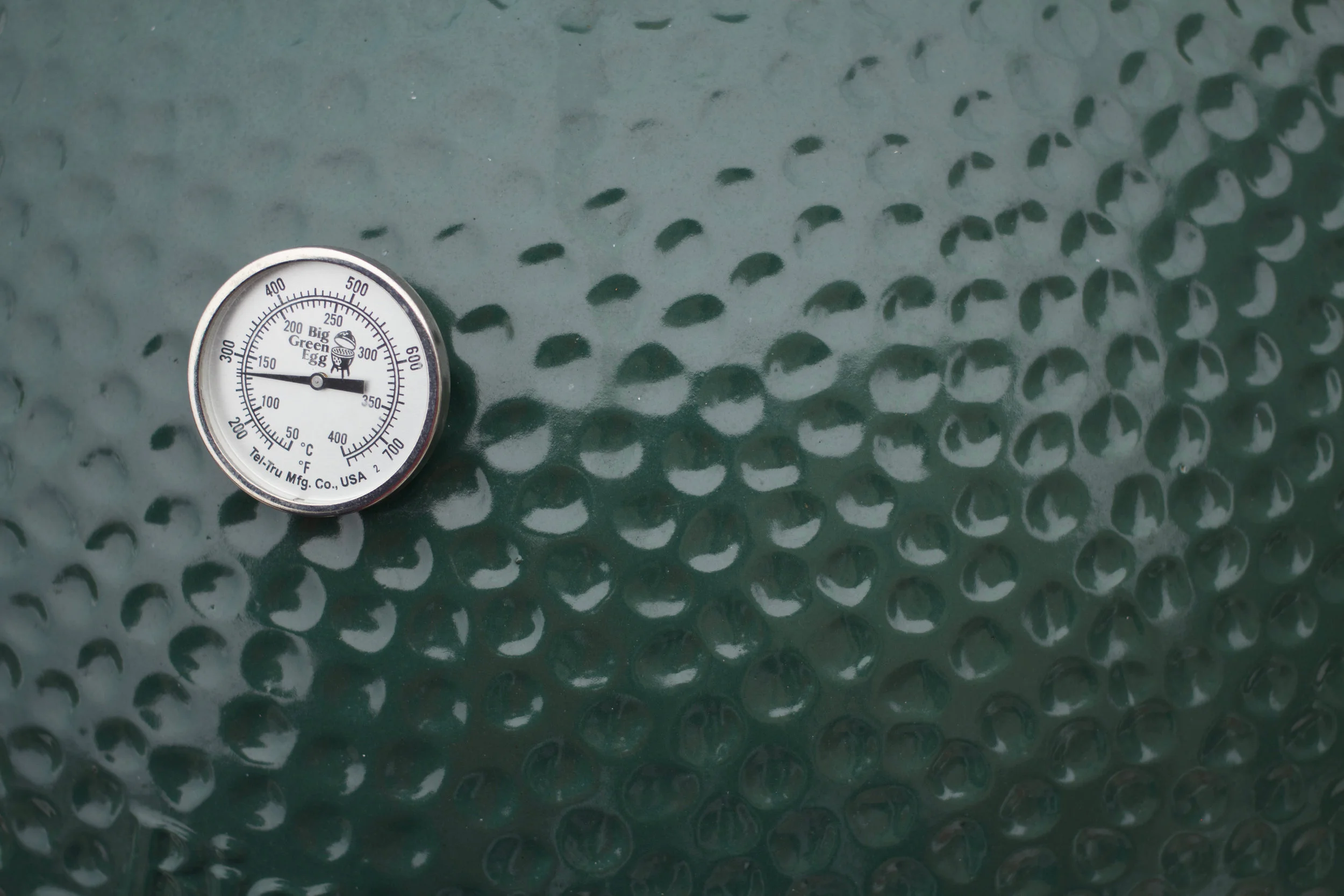Grilling 101: Kamado Grill Temperature Control
My primary grill is a Big Green Egg XL. If you just rolled your eyes, I'm going to assume you haven't had food off of one or used one yourself. I'm not an egghead by any means, but I do love the versatility of a kamado grill with the ability to control-ably range from ~190F for the lowest and slowest of cooks to 600F+ for wood fired pizza.
Temperature control is of course key to any grill or smoker and without a proper knowledge of how to control the temperature you can easily end up with a dry brisket or waiting an hour for a pizza to finish.
The Fire Triangle
Because Boy Scout knowledge isn't prevalent enough these days, I present Fire 101 as a subtopic of this post. The Fire Triangle is a basic model for the production and maintenance of most fires. Simply put, all three of the sides of the triangle must stand together or the fire will collapse like a two sided triangle.
When it comes to your grill, once you've got your fire started you won't have to worry about the heat side (even though you'll think about it a lot.) Similarly, fuel won't be a continual problem unless there is too little charcoal for a long cook or drippings into the fire cause a flare up. Changing your temperature will be almost entirely managed by oxygen.
The Kamado Grill
One of the things that makes the Kamado grill great is that ceramic helps to retain moisture and heat with extreme ease. It's also the thing that makes temperature control incredibly important - if you overshoot your temperature target by too much, it can be very difficult to get your temp back down.
Almost all Kamado grills are constructed in fundamentally the same way - a bottom draft door and a top vent, both of which have the ability to control air flow. These two openings work together in a simple science-y way.
As hot air escapes the top vent, cool air rushes in to take it's place through the draft door, providing the fire with oxygen. The more heat escapes, the more oxygen will reach the fire causing it to burn hotter.
This is also not to say you can leave the draft door open as wide as you want. The two work very closely together and the draft door is very important because it sits so close to your fire. One of my favorite ways of describing the relation ships is as macro (draft door) and micro (vent) controls. Adjust the draft door opening for large changes in temperature and the vent for small changes.
If you’re in the market for a kamado grill, checkout Big Green Egg, Kamado Joe, or Primo. These brands are all very high quality and will last a long time. I’ve heard it said that you should just pick the color your grandkids will like because it’ll last that long and the relative differences between them are small. (BGE = Green, Joe = Red, Primo = Black.)
Heating Up
As I mentioned earlier in this post, it's important to make sure you work your way up to your desired temperature as it can be very difficult to cool down a kamado grill that has gotten too hot. My guidance here is broken into the two primary types of cook: Direct and Indirect.
Direct: If you're cooking direct, light your fire and check back in 10-15 minutes later. Depending on your target temperature, set your vents and open them to your desired temperature.
Indirect: If you're cooking indirect, light your fire and check back in 15-20 minutes later. Set your vents and add any wood chunks before adding your plate setter. If you've overshot your temperature in the initial heating, the platesetter will help bring down the temp to the level set by your vents.
Low and Slow
Most people have no trouble with getting a kamado nice and hot to sear a steak or wood fire a pizza - the trouble comes with maintaining a low temperature for 10, 15, or even 20 hours (if your grill can hold enough charcoal) to smoke a brisket or pork shoulder. Ultimately, this is where you'll find the greatest variance grill to grill and you'll have to get to know your own specific kamado to really dial in for long period of time. My specific settings for ~225F on the Big Green Egg XL look like this — about 1/8" openings on the top vent and roughly 1/2" or a fingers width in the draft door.
Cooling Down
So you overshot your temp. Happens to the best (and most seasoned) of us. There's a lot of factors that can cause a temperature to spike up - wind, wood, charcoal, grease, drippings - and even the most prepared of us can fall victim to a ceramic grill that's retaining too much heat. Unfortunately, there's also not a fast way to cool it down. Just take these steps and repeat until your temperature sits where you want it to:
Close all vents and leave closed for 5 minutes
Open the grill for 30 seconds to let out heat
Close the grill for 5 minutes and let temperature settle
Repeat
When your temperature comes up to your target, open the vents back up to the related opening. If your vent openings caused you to overshoot in the first place, then obviously be more careful this time out. Practice makes perfect.
Edit: If you’re still over temp by a bit, you can also shut down the grill for a longer period and add a cool item you may not be using such as a heat deflector/plate setter (which will also help to choke the fire) or a drip pan full of ice.
Final Word
If you’re still having trouble managing temperature on your kamado grill on a regular basis, consider getting a smoker temperature controller. Here are a bunch of options including Flame Boss and DigiQ which are largely regarded to be the best in the category.
When people talk about “the best grill” the kamado style grill is often mentioned. Many who get their first kamado grill don’t experience “best” right away due to the temperature control problems. Hopefully these tips help you avoid (or resolve) that problem and get you creating some of your best ever bbq and grilled meals. Happy cooking!


